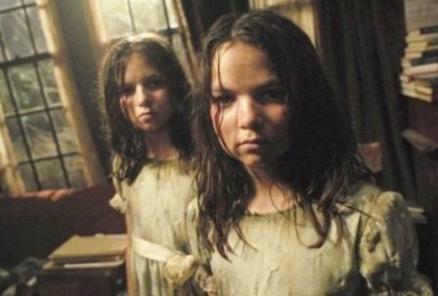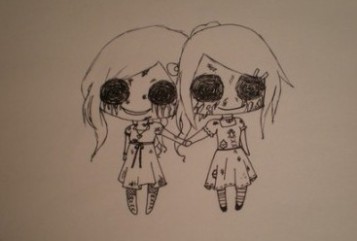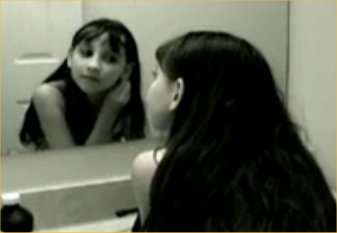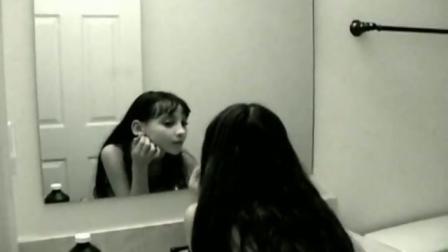
Many of Muriel Spark’s readers have accused her of being ‘cold’ in the treatment of her characters and in the case of Merle Coverdale in The Ballad of Peckham Rye, first published in 1960, Spark’s position of callous indifference would appear to have been taken to an extreme: Merle is not only heartlessly disposed of, but, through being constantly and relentlessly exposed to forewarnings of this event, the reader has arguably been induced to not care about it very much.
Merle is first presented to us as an absence: ‘ “she works at Meadows Meade in poor Miss Coverdale’s pool that was” ’ (12), and ‘Miss Merle Coverdale, lately head of the typing pool, did not hear of it’ (14). The reason Merle doesn’t hear of Humphrey’s return is because she is dead, murdered by her lover Mr Druce. This murder is heavily sign-posted from the very beginning of the novel and a great deal of repetition in the narrative centres around this event. The sign-posting, the repetition, and the flat delivery of the murder scene serve to deaden the reader’s response to Merle’s demise. We have looked for Merle’s death for so long that when it happens we are largely unaffected by it, which is not the case with Dougal’s imagined death scene, discussed below. But sympathy is always conspicuous by its absence in Spark’s work.
It is not only in Ballad that Spark presents a character’s end to us in so bald a fashion. Other examples of flatly-reported deaths in the Spark oeuvre include the casual and apparently motiveless murder of a woman in the final scenes of The Girls of Slender Means; the death by lightning of two bit-part characters in Not to Disturb; and the death of Needle (also heavily sign-posted) in the short story The Portobello Road: “He looked as if he would murder me and he did” (412). Of the latter example, Stephen Schiff wrote in The New Yorker:
‘It’s a nasty piece of work, that sentence…for a moment the blow is difficult to absorb. The first clause is about a glance, the second about a catastrophe, yet both have the same nonchalant tone, and it is this evenness of tone that freezes the spine.’ (1993: 36)
One might well wonder as to the nature of Spark’s intention in disposing of her characters so coolly. A convincing explanation for Spark’s chosen method lies in David Herman’s suggestion that Spark has adopted for her own purposes techniques associated with Bertolt Brecht’s Verfremdungseffekt (2008: 477), itself rooted in work done on ‘defamiliarisation’ by the Russian Formalists, Viktor Shlokovksy in particular, at the beginning of the twentieth century. The theory behind the Verfremdungseffekt is that the reader is ‘alienated’ from the characters and ceases to feel any regard for their fate, being encouraged instead to take a more conscious, objective view of proceedings. Any emotional involvement with the characters on the reader’s part is stripped away by a laying-bare of the artificiality of the constructed text, and the reader is forced instead to make judgements on an entirely intellectual level. Alan Massie also suggests that Spark belongs amongst the rank of novelists
‘who have attempted to understand the world by cultivating detachment; so that what they construct has a self-conscious artistry, which depends for its effect on the writer’s oblique stance to his material. There is a clear preference for imposing form rather than interpreting what is immediately presented to the eye; it is the form which will give significance.’ (1979: 94)
In practice, the attempt to create such an emotional distance is not always successful and the results can be unpredictable: notice, for example, Schiff’s reaction to Needle’s death above. What Schiff is responding to, however, is not the death of the character – we already know at this stage in the narrative that Needle is a ghost – but to the ‘evenness of tone’ the I-narrator adopts in relating her own murder. Schiff notes Spark’s own comment on the sentence in question:
“There’s something aggressive about it,” Spark admits. “I’ve put a lot of tension into it, and I’ve left the emotion out. I don’t really like very much writing about emotion. I like for it to be read between the lines.” (1993: 36)
As a self-proclaimed satirist, Spark may have found the technique of the Verfremdungseffekt intriguing. In addressing the American Academy and Institute of Arts and Letters in 1971, Spark gave a speech entitled ‘The Desegregation of Art’ (often quoted, and reproduced in Hynes, 1992: 33-37), in which she argues in favour of satire and ridicule in place of sentiment:
‘the power and influence of the creative arts is not to be belittled. I only say that the art and literature of sentiment and emotion, however beautiful in itself, however striking in its depiction of actuality, has to go. It cheats us into a sense of involvement with life and society, but in reality it is a segregated activity. In its place I advocate the arts of satire and of ridicule.’ (1992: 35)
Spark’s argument runs along lines similar to those of Brecht: ‘the liberation of our minds from the comfortable cells of lofty sentiment’ will free us from ‘the illusion that we are all essentially aspiring, affectionate, and loving creatures’. Ridicule, as opposed to sentiment, ’can penetrate to the marrow. It can leave a salutary scar. It is unnerving. It can paralyze its object’ (1992: 36). So, in the case of Merle Coverdale’s murder, Spark aims to underscore the horror of the act by deadening our emotional response to the victim. The latter is achieved by numerous forewarnings of the event to follow and by the deadpan way in which the murder itself is related, placed as it is in almost direct juxtaposition with the more sentimental imagined murder of Dougal Douglas.
From the very beginning of the novel, Merle Coverdale is a dead woman walking. Her untimely demise is marked out clearly for the reader in many ways. For example, Merle’s death is sign-posted through the settings in which we see her: in chapter three, Dougal takes Merle for a walk through a cemetery, and on page 126, ‘Miss Frierne [leaves] Miss Coverdale in that hall which was lined with wood like a coffin’. Secondly, Merle’s epithet is an example of one of Spark’s epithets that contain a hint of the plot. References to the attenuated length of Merle’s neck appear every time she is mentioned. Dougal refers to Merle as an Okapi, a giraffe-like animal, and to Merle’s neck itself as ‘a maniac’s delight’ (101). Merle dies when she is stabbed in the neck nine times with a corkscrew. Thirdly, death in some shape or form is always mentioned, without fail, in close proximity to Merle’s name: on page 34, ‘ “That Miss Coverdale in the pool,’ said Mavis, ‘is working Dixie to death…” ’; on page 97, ‘ “Killing herself,” Merle said, “that’s what she is, for money.” ’; on page 100, ‘ “I’ve got a rotten life. Sometimes I think I’ll swallow a bottle of aspirins.” ’; and lastly, on page 102, ‘ “There’s bodies of nuns down there, miss,” the policeman said’. The cumulative effect of these repeated references to death is to point to Merle’s own impending demise in an unequivocal fashion.
To sum up so far: we infer that Merle is marked for an untimely end through the references to death which surround her every appearance, and we have seen her placed in the settings of a cemetery and a coffin. We can guess at the manner of her death from the repeated references to her neck, which are so frequent as to constitute her epithet. The following examples demonstrate that we can also deduce early on who is responsible for Merle’s death. In every scene featuring Merle and Druce, Druce looks at Merle with a sharp, pointed object in his hand, as follows:
p. 51: ‘He turned, with the bottle-opener in his hand, and looked at her.’
p. 53: ‘Mr Druce took a bread-knife from the drawer and looked at her.’
p. 82: ‘Mr Druce lifted his paper-knife, toyed with it in his hand, pointed it at Merle, and put it down.’
p. 134: ‘He turned to look at her with the corkscrew pointing from his fist.’
The four sentences above are constructed largely along the same lines, and it is interesting to note that the ‘looking’ of the first two examples turns into ‘pointing’ in the latter two – an indication that the threat posed by Druce is becoming increasingly serious. Druce touches, tickles or squeezes Merle’s neck every time they are alone together: ‘She put her hand up to her throat and moved it up her long neck. “Mr Druce squeezed it tight the other day,” she said, “for fun, but I got a fright.” ’ (100-101). We see, therefore, that long before the murder scene, the reader has been alerted through various kinds of narrative repetition that Druce will murder Merle by attacking her neck with a pointed object. By the time Druce looks at Merle ‘with the corkscrew pointing from his fist’, we know that that corkscrew will be the murder weapon.
Let us turn now to the murder scene itself, which is placed in juxtaposition with the scene of an imaginary murder. In chapter eight, both Merle and Elaine visit Dougal’s room in scenes that open with an almost identical verbal exchange with Miss Frierne. Merle, Dougal’s first visitor, is upset and tells Dougal ‘ “God, if Mr Druce thought I was working in with you, he’d kill me.” ’(128). Elaine in her turn informs Dougal that there is a gang looking for him and Dougal imagines his murder at the hands of Trevor Lomas. This imagined murder is replaced in the following chapter with a real murder: Merle dies at Druce’s hands, as she predicted.
The contrast between the two murder scenes, placed in such close proximity in the narrative, creates a bathos which contributes in no small measure to the overall alienation effect the reader experiences in relation to Merle’s death. As one would expect from a character who spices up a dull autobiography with saucy tales, Dougal’s description of his own imagined murder (130-131) is far more exciting than the deadpan narration of the killing of Merle. Dougal’s own tale contains visually dramatic verbs (compare, for example, ‘out jumps Trevor’ with ‘He came towards her’), sinister adjectives (‘black concealing’), and melodramatic touches (‘in the gutter’). Told in the present tense to give immediacy to the scene recounted, the reader is made aware of the position of each of the characters involved as an aid to visualisation, and is left to imagine the horror of the mutilated body. The policeman who finds Dougal ‘pukes on the pavement’ and his fingers are ‘trembling’ as he whistles for help. We see nothing like this in the murder of Merle Coverdale. Her death is indeed a gruesome one, but there are no sound effects (‘rip rip rip’), or characters vomiting at the sight of the body: the final bathetic note sounds later in the narrative when Merle’s corpse is discovered only because the neighbours are alerted when Druce’s supper burns.
The actual murder scene is played out, but with a different ending, at an earlier stage in the narrative, when we see Druce and Merle meet for their usual Saturday night assignation in chapter four. It quickly becomes clear to the reader that there is no life left in this affair: the conversation is desultory and they watch a ‘fragment’ of a television play together, just as Mavis and Arthur do in a mirror-image dysfunctional relationship. Gerard Carruthers notes that:
‘We see the pair sharing dull suppers together and Druce very neatly folding his trousers prior to their passionless lovemaking with the implication that they have lost not only a keen sense of goodness, but of badness too.’ (2008: 495)
The scene ends with a paragraph structured in parallel: ‘She went into the scullery and put on the kettle while he put on his trousers and went home to his wife’ (54, my emphasis). The parallelisms inject a blackly humorous note into the proceedings of this tawdry affair, but the reader will once again see Druce don an item of clothing and go ‘home to his wife’, this time leaving Merle’s corpse behind him: ‘He came towards her with the corkscrew and stabbed it into her long neck nine times, and killed her. Then he took his hat and went home to his wife’ (136, my emphasis).
These parallel repetitions are part of a much wider structure of repetition at sentence-level here in these two scenes, and elsewhere in Ballad. A subject-verb-complement sentence structure constitutes the dominant feature of the opening chapter, as is the case in the assignation scene, and the murder scene. In the latter, there are at least 21 subject-verb-complement sentences connected with Druce, sometimes in rapid succession, as here:
‘He handed over her glass of wine. He looked at the label on the bottle. He sat down and took his shoes off. He put on his slippers. He looked at his watch.’ (135)
What is significant is that the sentence describing the murder itself is constructed in exactly the same way, with the addition of one final, horrible, clause: ‘He came towards her with the corkscrew and stabbed it into her long neck nine times, and killed her’ (136). The repetition of an identical sentence structure at this point places the murder on the same level as all the mundane actions described in the succession of subject-verb-complement sentences, and, even though the reader has been expecting Merle’s death for a long time, it is still possible to be shocked at the casual way in which Merle is disposed of, much as the ‘evenness of tone’ used to tell us of Needle’s death produces a chilling effect.
In conclusion, it is clear that there is an element of tension in operation between the narrator’s delivery of the murder scene and the relative weight the murder is given in the text. After such a lengthy build-up, the flat delivery and anti-climax of the murder is startling and confusing, because it is not what the reader was expecting. Dougal’s imagined murder fills that particular gap, and the reader is cheated of the high drama of the fantasised killing when finally called upon to witness Merle’s long-awaited murder. An unresolved tension is generated also in the reader’s response to the murder itself: as previously mentioned, the repetitive foreshadowing of Merle’s death means that the reader is waiting for it and will not be surprised or affected by it when it comes. Humphrey and Dixie may well be the subject of the ballad that circulates in Peckham Rye, but the build-up to Merle’s murder also fills its fair share of text-space. However, in spite of the reader being prepared for, and hardened to, the event to come, the calculated manner in which the murder is casually narrated, in an identical fashion to the description of Druce putting on his slippers, will cause the reader to suffer the same sort of ‘blow’ as that described by Schiff. In retrospect, the overly-dramatic, overly-literary nature of Dougal’s imagined death is shown for what it is in comparison to the very pedestrian, but somehow much more real murder of Merle. We know how to respond to Dougal’s ‘murder’, but our response to Merle’s death is far more complicated, and the Verfremdungseffekt is thus brought into play.
Bibliography
CARRUTHERS, G. 2008. ‘Fully to Savour Her Position’: Muriel Spark and Scottish Identity. Modern Fiction Studies, 54, 487-504.
HERMAN, D. 2008. ‘A Salutary Scar’: Muriel Spark’s Desegregated Art in the Twenty-First Century. Modern Fiction Studies, 54, 473-486.
HYNES, J. (ed.) 1992. Critical Essays on Muriel Spark, New York: Macmillan.
MASSIE, A. 1979. Muriel Spark, Edinburgh, Ramsay Head Press.
SCHIFF, Stephen. 1993. Cultural Pursuits, “Muriel Spark Between the Lines,” The New Yorker, May 24, 36.
SPARK, M. 1999. The Ballad of Peckham Rye, London, Penguin.













